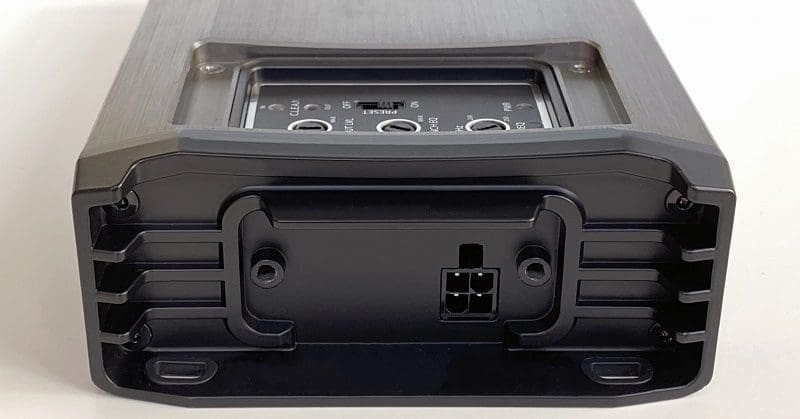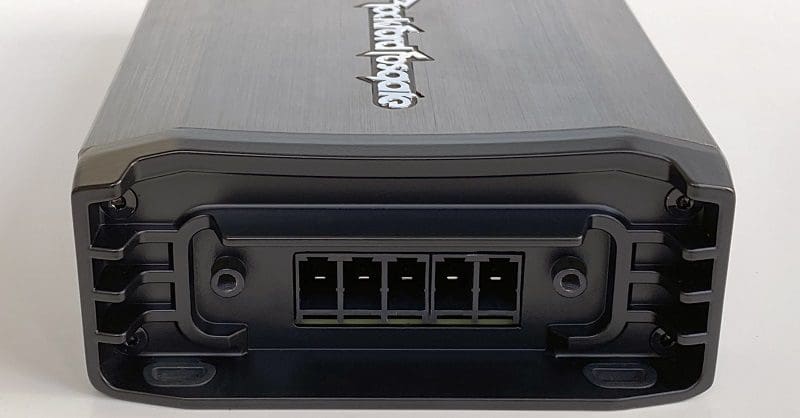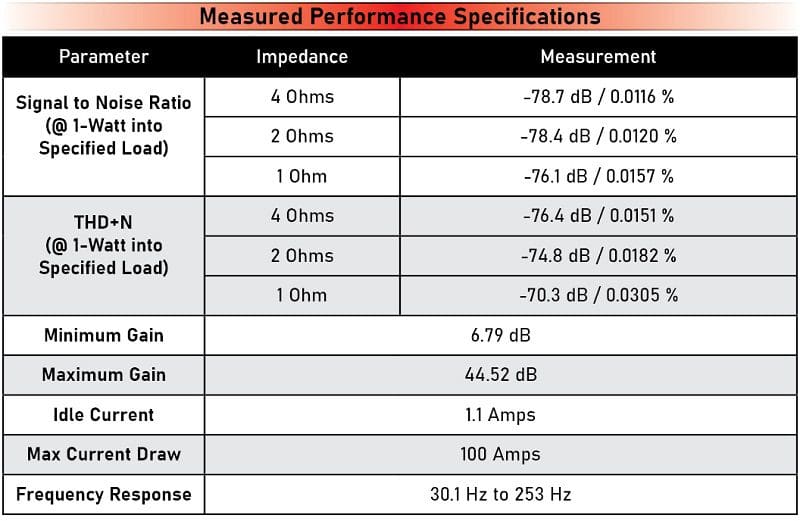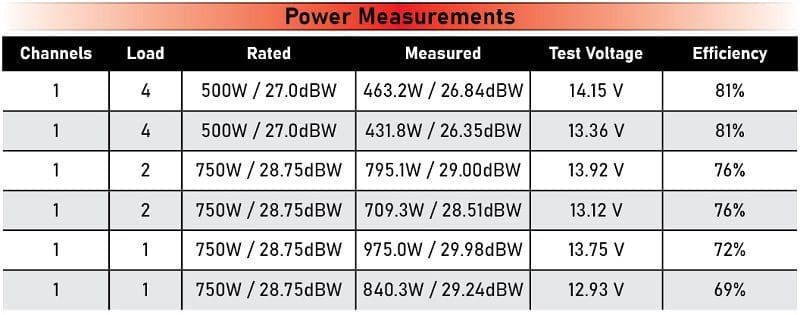Over the last few years, Rockford Fosgate has cemented itself as the leader in motorcycle and powersports audio upgrade solutions. In the winter of 2021, they launched their new M5 series of Element Ready amplifiers to take the durability of their upgrades to a new level. Based on the beloved Power Series T750X1bd amplifier, the M5-1000X1 is rated to dish out 750 watts of power with a IPX6 water-intrusion rating that ensures you’ll have tunes even if things get wet or muddy.
The new M5 series includes this 750-watt monoblock amplifier for subwoofers, along with a four-channel M5-800X4 that produces 100 watts per channel and the five-channel M5-1500X5 that combines a four by 100-watt full-range amp with a 600-watt monoblock in a single chassis.
Rockford Fosgate M5-1000X1 Physical Features
The M5 monoblock is based on an extruded aluminum heatsink that runs the width of the amp. A recessed panel on the left side of the amp top is home to the input level control, the Punch EQ adjustment and the low-pass crossover frequency adjustment. The input sensitivity is rated at 150 mV to a healthy 12 volts. The crossover is adjustable between 50 and 250 Hz and has a slope of -12 dB/octave. We’ll take a close look at the Punch EQ control function when we bring the amp to life on the test bench.
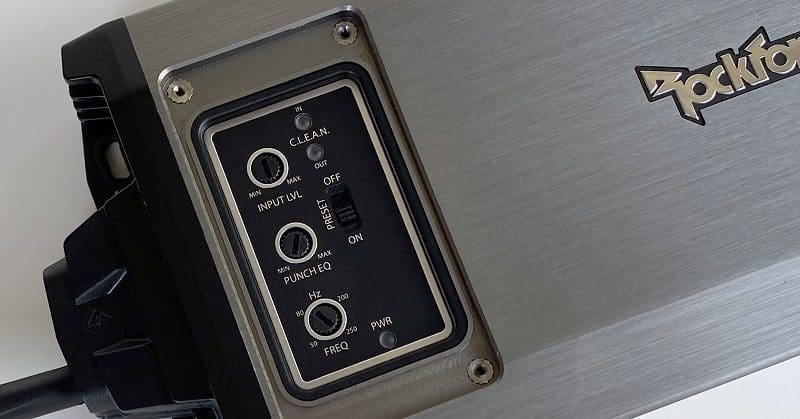
Rockford Fosgate includes their Calibrated Level Eliminates Audible Noise (C.L.E.A.N.) set-up system on this amp to help technicians efficiently and accurately optimize the input and output signals. The IN LED will illuminate if the amplifier detects distortion in the input audio signal, and the OUT LED illuminates when the amp has reached its maximum power output capability. Finally, a PRESET on/off switch optimizes all of the amplifier’s settings for use with the company’s UTV audio kits. A translucent plastic watertight cover screws in place to keep these controls clean and dry.
The ends of the amplifier have heavy-duty molded end caps with integral sealing gaskets for the wiring. The wire pigtails extend 12 inches from the ends of the amp so your installer can route them up and away from anywhere that might get wet. A quick-connect terminal block is provided for power, ground and remote turn-on connections. The connector has square terminals with a width of 0.155 inch to accept eight AWG power cables. The speaker output connector is a similar design and has the same size connectors.
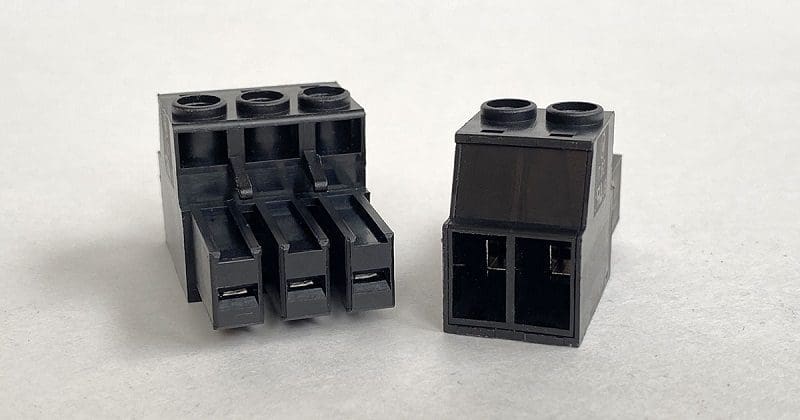
Audio signals are fed to the amp via a set of RCA terminals on another pigtail at the opposite end. The RCA jack supplied with the amp goes from a Molex connector to 6 inches of white and gray 18-AWG wire, then into a molded block with a pair of RCA jacks on another 6 inches of wire. If your installer needs to connect the amplifier to a speaker-level audio source, he or she can cut off the RCA jack and connect the white and gray wires. This input option works because the amp uses true balanced differential inputs. This design also helps eliminate noise that might be picked up by the interconnect cables as they run past a computer or high-current conductor in your boat, side-by-side, car or truck.
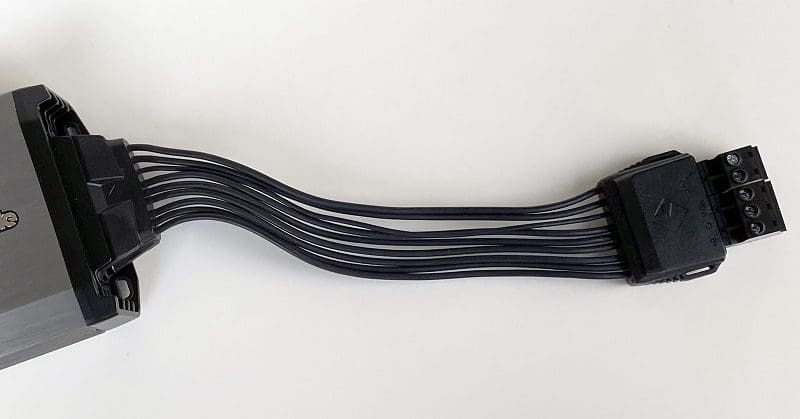
Physically, the amp is 4.25 inches wide, 1.7 inches tall and 9.7 inches long. Some cables extend out the amp’s ends, so allow for about 11 inches as a total effective length.
Rockford Fosgate isn’t shy about talking about the features of its products. The M5-1000X1 is described as functioning in a Class-BD configuration to deliver excellent efficiency compared to Class-AB amplifiers. The amp also uses their lightly regulated POWER Supply design that increases maximum output capability when the supply voltage rises. The Maximum Efficiency Heat Sink Application (MEHSA 4) is an optimized thermal management design that keeps the amp cool while minimizing distortion and extending its longevity. Next, the amp includes their NOn-Multiplying Advanced Decision (NOMAD) protection circuitry to monitor amplifier temperature, voltage and current conditions and protect the amp if something is out of spec. Don’t underestimate the performance value of these features. There are lots of products on the market that claim similar power production specifications that won’t last as long or perform as well.
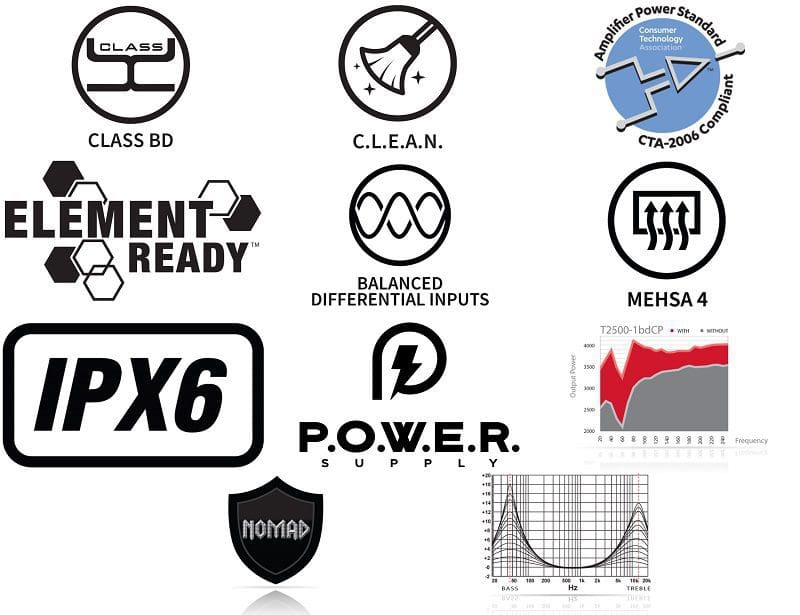
We should talk about the part number of this amplifier for a second. If you’ve followed Rockford Fosgate’s marine speaker and subwoofer product naming conventions over the last year, you’ll see they’ve changed from Prime, Punch and Power to M0, M1 and M2. The M2-Series amplifier aligns with Prime car audio models, so M5 would be a performance level akin to the Power-Series products.
Detailed Specifications
Starting with a look at the power production specs, we see that Rockford Fosgate rates the amp as capable of producing 500 watts into a 4-ohm load and 750 watts when connected to a 1- or 2-ohm load. These specifications are provided as compliant with the ANSI/CTA-2006-C standard, so you know you can trust them. Rockford also provides a Dynamic Power rating for all of its amplifiers. This rating is measured with their Audio Graph PowerCube and RATS system. In short, dynamic power measurements involve playing a test tone for 20 milliseconds, then letting the amp rest/recharge for 480 milliseconds before repeating. The test is a great demonstration of the energy storage capabilities on the output of the power supply. In the case of the M5-1000X1, they rate it as capable of producing at least 525 watts at 4 ohms, 900 watts at 2 ohms and 1,000 watts of power at 1 ohm.
In terms of frequency response, the spec is a very reasonable 30 Hz to 245 Hz. Given that the amp has a fixed infrasonic filter set at 30 Hz and the upper cut-off frequency of the low-pass is 250 Hz, these numbers are quite believable. Rockford rates the amp as >80% efficient, and Total Harmonic Distortion plus Noise is specified as less than 0.1% at 1-watt of output. If you check the provided owner’s manual, Rockford lists the signal-to-noise ratio at >110 dB. While I might be wrong in my assumption, this seems like a measurement taken at full power rather than at the CTA-2006-C 1-watt level. We’ll see what happens when we get it on the test bench. If the birth certificate is accurate about this amplifier’s ability to make about 1,000 watts of power and my math is correct, the 1-watt measurement should be just under 80 dB.
A final feature mentioned in the owner’s manual is that the amp includes an automatic turn-on for connectivity with radios that don’t have a remote turn-on output. The amp monitors the RCA inputs for the presence of the 6-volt DC offset produced by the BTL amp in those radios. When it detects the presence of that 6 volts, it turns on.
Before I head to the lab, let’s talk about the IP rating. The Ingress Protection rating description system is a simple way to know how well a product is protected against dust and water. The IPX6 rating means that this amplifier has been designed and tested to function normally after being exposed to jets delivering 26.4 gallons of water per minute at 15 PSI. The water is sprayed at a distance of 9.8 feet from to amp in all directions for at least three minutes. You can spray it with a hose or splash it, and there shouldn’t be any issues.
Rockford Fosgate M5-1000X1 Bench Test
Let’s start our time in the lab with a bit of unboxing. When you open the lid on the carton, the first thing you find is the owner’s manual sheet and a thank-you card with support contact information. A silver Rockford Fosgate Diamond-R sticker is provided for you on the back of that card. I like stickers! I had forgotten that Rockford includes what we used to call a birth certificate with each of their amplifiers. This data sheet is currently called a Certificate of Performance Verification. It not only tells you how much power this amp made on their RATS system but confirms that the system circuitry is functioning correctly and that the noise, frequency response, distortion and dark current specs are within tolerance. You can see the specs for this particular amp below.
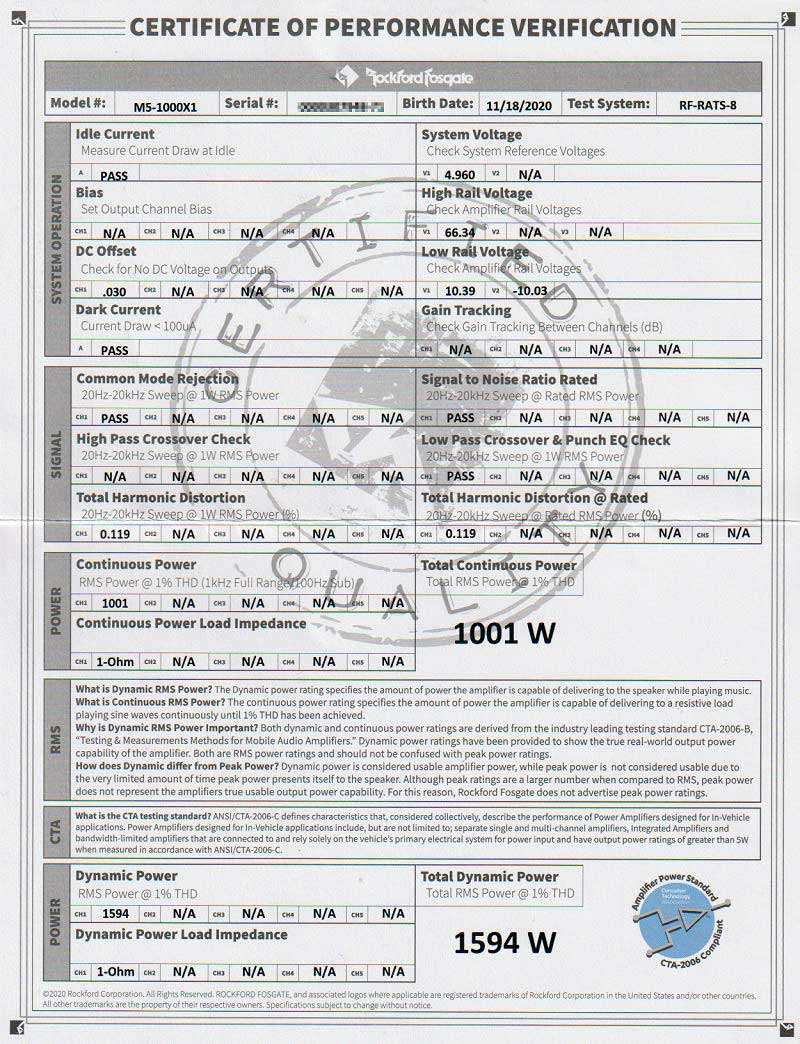
The power, speaker and RCA connectors are packed in between the amp and the carton. The amp itself is sealed in thin plastic shrink wrap to protect it, and it’s held firmly in place with die-cut foam blocks. Removing it from the package, you’re met with an impressively solid feeling. The amp weighs 3.63 pounds (1.65 kilograms). Given there is no cooling fan, this mass will contribute positively to the thermal management capabilities. Not having a cooling fan is a good idea, especially in a product designed to get wet, dusty or dirty.
A bright yellow warning label on the top of the amp advises that activating the PRESET switch will bypass the control panel settings and that the switch is intended for use in Rockford Fosgate Side-by-Side audio upgrade kits. You’ll find a similar warning on the cover over the controls. They really want your installer to understand when to use that mode and, more importantly, to know that the amp ships with the PRESET switch set to ON.
Each of the wire pigtails on the ends of the amp is held in place with a pair of 3 mm hex screws. Once removed, the pigtails can be disconnected. Closed-cell foam gaskets seal the pigtail blocks to the amplifier’s aluminum end caps. Though the connectors to the amp circuit board are the same as those on the end of the pigtail, Rockford designed the end caps so your installer can’t plug them in directly.
Sometimes, the most exciting features of an amplifier aren’t directly performance-related. Each of the four hex-head cap screws that secure the pigtails to the amp ends has a tiny rubber O-ring under them to help keep water out. They are also quite tight, so don’t take them off unless necessary. If you do, make sure you are using high-quality Allen keys. Two other items of interest involve the cover over the controls. The four screws in the corners remain captured in the cover so that they won’t get lost while your installer is setting up the amp. Slick! Each of those screws threads into steel inserts pressed into the aluminum heatsink. Last and certainly not least, small plastic inserts around the mounting holes in the end caps will prevent the screws or bolts your installer uses to mount the amp from damaging the anodizing on the end caps. This is a seriously impressive level of attention to detail. Sadly, I wasn’t able to undo the end caps. The screws feel like they are set in place with a thread-locker, and with 2 mm heads, they’d be easy to strip. Sorry, no, I’m not going to take a torch to the ends of the amp to loosen them. Hmm, what about my soldering iron?
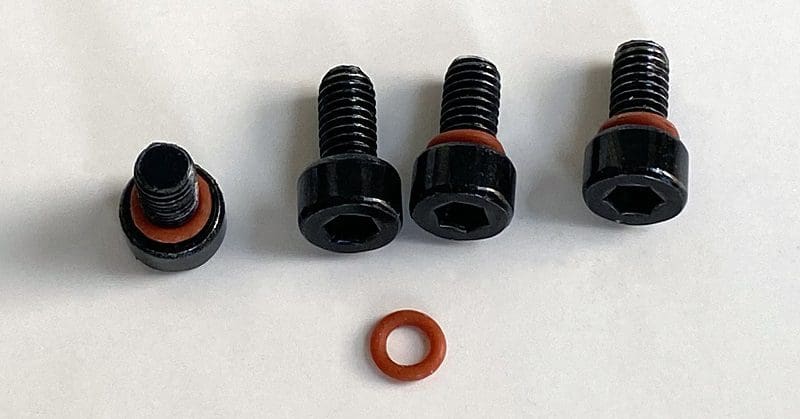
After connecting the amp to my bank of power supplies and load resistors, I started the testing by measuring the amp’s frequency response and the Punch EQ system’s function. For the frequency measurements, I checked the crossover’s function at several settings, along with the frequency response into 4-, 2- and 1-ohm resistive loads and my reactive simulated speaker load. Next, I analyzed the noise and distortion characteristics of the amp. Because this amp is likely to be loaded down to 2 or 1 ohms, I repeated these tests at each impedance to get a real-world sense of how it behaves.
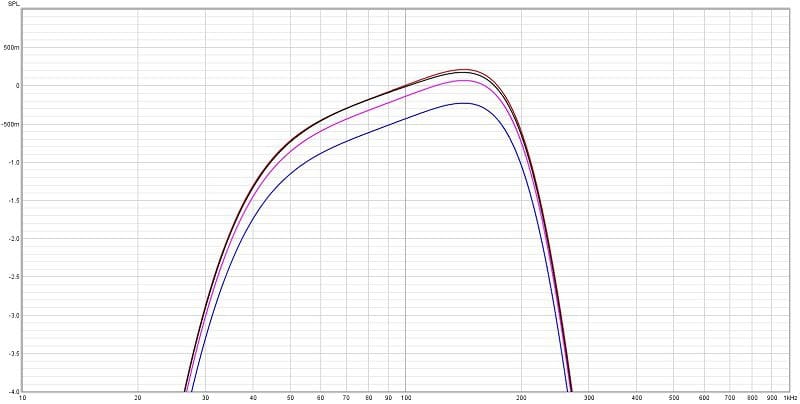
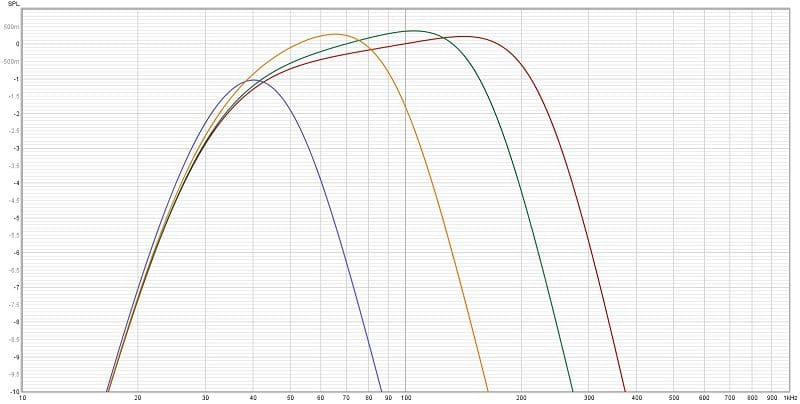
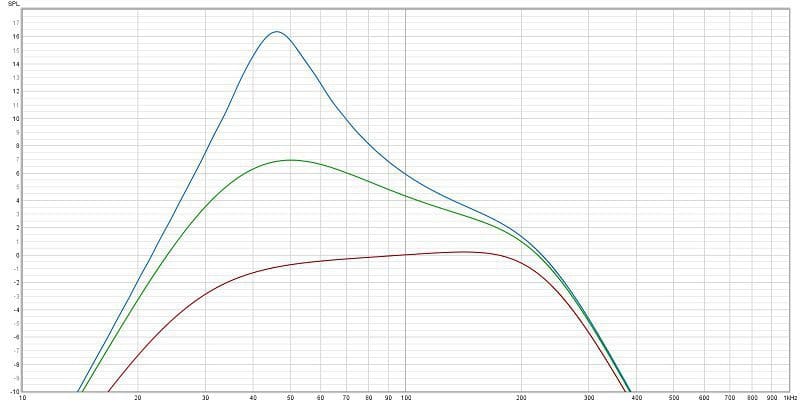
The frequency response versus load impedance behavior was very good, with no noticeable change to the shape of the response curve at any level. The Punch EQ circuit is a low-Q adjustment that dramatically affects the output of the amplifier. The behavior of the low-pass filter circuit is interesting. In most amplifiers, the low-pass filter doesn’t affect lower frequencies. On the M5-1000X1, the maximum output frequency tracked downward as the crossover frequency was decreased. This means the peak output level remained constant. That’s pretty cool! There is a slight upward slope to the amplifier’s overall frequency response. If you don’t have a digital signal processor in your audio system and based on what I see in the frequency response graphs, I’d recommend asking your installer to twist the Punch EQ knob to about nine o’clock to warm up the bottom end a bit.
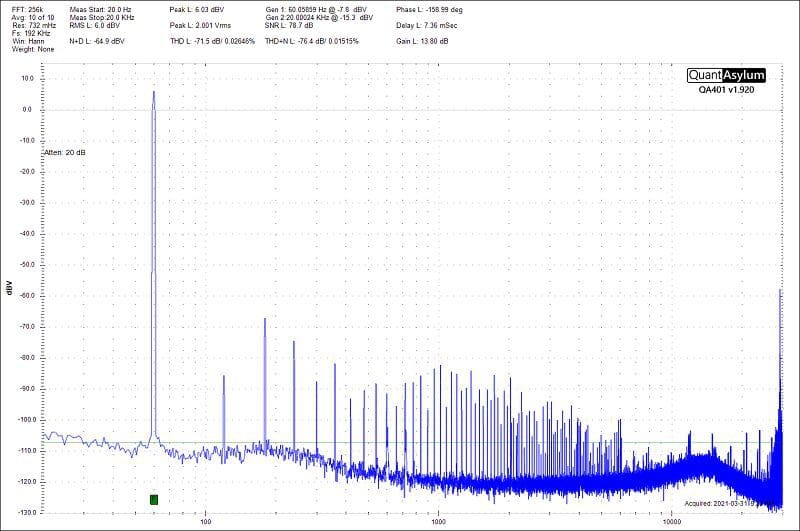
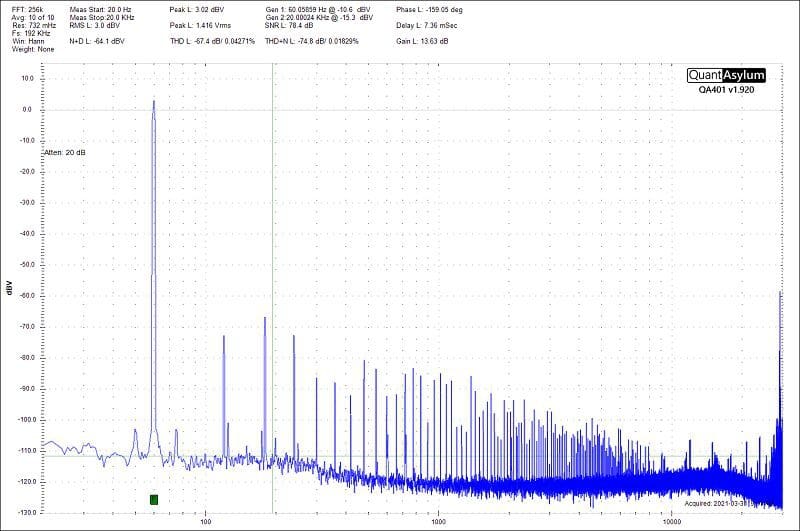
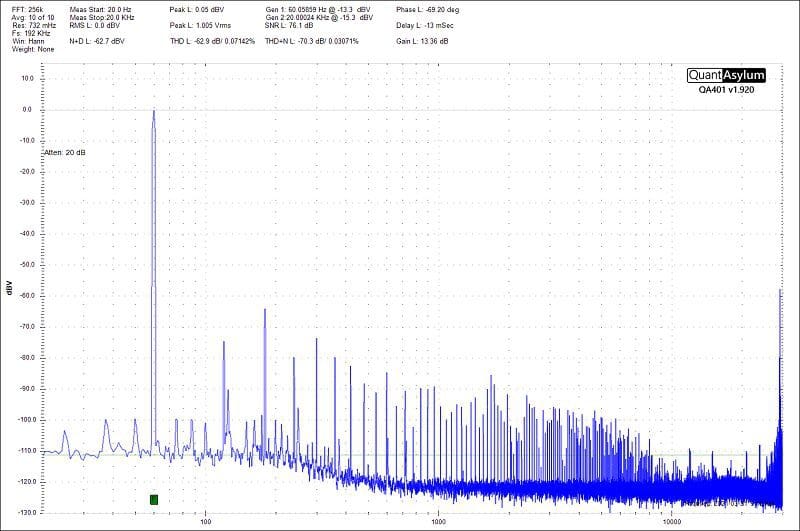
It was interesting to see that both the signal-to-noise ratio and the Total Harmonic Distortion and Noise measurements didn’t fall on their face when the amp was loaded to 1 ohm. In most high-current subwoofer amplifiers, these numbers get much worse as the current delivery requirements increase. This is no ordinary subwoofer amplifier. The idle current measurement was excellent, and the frequency response was right on spec with the owner’s manual and website. That’s a huge range in terms of overall gain capability, so the amp will work well with almost any audio source.
Next up, it was time to test the amp for maximum power production and efficiency. My power supplies aren’t adjustable to a specific voltage but have low and high settings that will demonstrate the amplifiers’ ability to increase output power with increased supply voltage. The chart below shows how much power the amp made when the Total Harmonic Distortion and Noise in the output reached a level of 1%. I have included the supply voltage levels for each measurement.
While the high-voltage 4-ohm number is a few watts short of the 500-watt rating, the extra 0.25 volt required to meet the 14.4-volt spec would easily put it over. Given that the difference in output is only 0.16 dB, this is effectively irrelevant. There’s something in the water when it comes to how these old-school companies rate their amplifiers. At 2 ohms, the amp exceeded its rating by more than 49 watts and did so when powered with less than 14 volts. This behavior repeated with the 1-ohm load measurements where it bested the 750-watt spec by a mind-boggling 225 watts when supplied with only 13.75V. This amp is a little monster!
Another issue that’s often overlooked when choosing an amplifier is the efficiency of the power supply. After more than an hour of beating on the amp at various impedances and voltages, the heat sink was good and hot, but unlike some amps I’ve tested recently, it never shut down. An efficiency of 72% when driving a 1-ohm load is very, very good. I recently tested a name-brand amp with similar power ratings that was less than 60% efficient at that load and voltage.
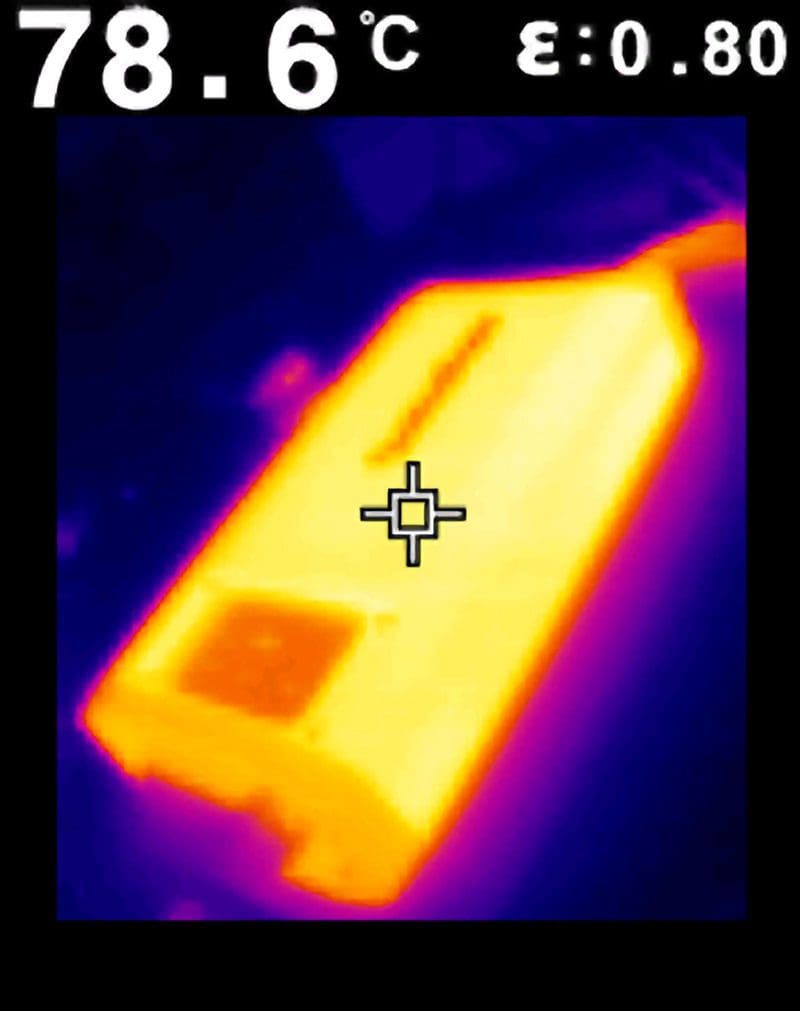
I checked the function of the CL.E.A.N. circuit, and it works fantastically. When the output signal is getting close to maximum, the output LED illuminates blue. When the output reached 2.2% distortion (using a 40 Hz test tone), it changed to red and blue. Talk about a great way to set up an audio system quickly! The C.L.E.A.N. circuit is cool!
I noticed that the power connection and pigtails got warm during my testing. Of course, feeding full-power test tones into an amplifier is not the same as listening to music that’s dynamic and varying in amplitude. The average modern pop or rock track still has an average RMS amplitude of -15 to-20 dB and an average loudness around -10 dB from the peak levels. This means you will average around 10 amps of current, even if the peaks are at the 100-amp level. In the same vein, you aren’t going to be competing in SPL contents with this amp. Get yourself a few (or a lot) of the T2500-bdCP amps, a bunch of alternators and a bank of batteries if that’s your thing. Nevertheless, select top-quality power cable like the full AWG-specification, all-copper Rockford Fosgate 8 AWG Frosted Red and Black and be sure your installer uses a high-quality 100-amp fuse holder to protect the amp.
Listening Test
I set the amp up in my listening room for the listening tests and connected it to a 10-inch subwoofer that I developed about 20 years ago. The sub is wired to a 2-ohm load. I set the low-pass crossover on my modified DRZ9255 head unit at 63 Hz and applied a high-pass filter to my LSi7 bookshelf speakers at 80 Hz. With a few extra decibels of output from the subwoofer system, everything blended together nicely.
I checked the amp for turn-on and turn-off pop while wired into the system. This is the most realistic challenge I can provide. Not only do I listen for unwanted noises, but I cycle power on the deck a few times while keeping one hand on the subwoofer cone. The M5-1000X1 was absolutely silent during start-up and shut-down.
As with any review, understanding the application for a product is crucial. I mean, testing commercial-grade Bose noise-canceling headphones for use in helicopters as though they are a high-end audiophile solution makes no sense. The M5-1000X1 is designed for marine, powersports and mobile applications where water-resistance is crucial. With the fixed high-pass filter at 30 Hz, I’m not going to be listening for the infrasonics in the “1812” Overture, “Boom Boom Pow” or “Purple Lamborghini.” This amp is about giving you a solid kick in the back while easing the load on the full-range speakers and their amplifiers in the rest of the system so they can play much louder.
Do you recall what I said earlier about needing to turn up the Punch EQ control to give this amp a good kick? Ignore that. It doesn’t need any help. I started the listening session off with “Royals” by Lorde from her album Pure Heroine. The deep bass line that kicks in at 23 seconds into the song is a lot of fun as it’s centered around 45 Hz. When it repeats at 35 seconds, it drops to below 40 Hz and is even better. The M5-1000X1 had no problem ensuring that everyone in the building could enjoy the music with me. I’ll be honest: I thought that the infrasonic filter would detract from the listening experience. It doesn’t.
Next, feeling a little retro, I played Madonna’s “Vogue” from her The Immaculate Collection album. This song took me back to the first time I sat in the Rockford Fosgate “Blastro Van” at the first stereo shop I worked at around 1988. I can still envision those four 18-inch subs right behind my head! At 16 years old, I’d never heard anything like it! Nevertheless, The M5-1000X1 had no problem with the 35 Hz bassline that starts 35 seconds into the song. The bass was detailed and authoritative with good clarity.
Harkening back to the long-gone days of printed product reviews, I recall one of the reviewers used Metallica’s track “One” from the And Just for All album to audition subwoofer systems. Lars Ulrich’s double bass drums are indeed an excellent subwoofer challenge. I admit, I haven’t listened to this in a while and was eager to see if the combination of my subwoofer and the Rockford Fosgate amp could keep up. You’ll notice in listening to the song that the bass drums in Lars’ kit are mixed at a relatively high level. They don’t overpower the performance, but they are abnormally prominent. This subwoofer system resolved the double-bass rolls that started at 4:20 into the song with good clarity. They weren’t razor-sharp with a thud, but each was still individually defined. To confirm my belief that the bass drum mix was a bit hot, I played Phil Collins’ “In the Air Tonight” right after. It had a much more realistic balance. Yes. I air-drummed. Did you have to ask?
Last and most certainly not least was “Get Lucky” by Daft Punk. Listening to this song on a system that includes subwoofers is very different than one with just full-range speakers. I’d say everything was more transparent, and the recording values put into the track seemed enhanced even more. What stood out on this subwoofer combination was the detail in the bass. Not only does the recording have good energy down to almost 20 Hz, but there are also many tones combined in the bass beat. The energy at 38, 50 and 70 Hz is spread slightly apart, giving the low-frequency almost a vibrato effect. The Rockford amp and my sub did a great job reproducing this deep, textured bass information with very good clarity, even at listening levels that had the drop-in ceiling tiles in my listening room rattling.
Rockford M5-1000X5 Conclusions
Sometimes car audio products suffer when they are designed for unique applications. In the old days, marine speakers didn’t sound as good as their car audio brethren, and marine amps weren’t water-resistant. The engineers at Rockford Fosgate know more than a thing or two about building amplifiers. Their transformation of this Power Series subwoofer amp into an Element Ready solution that can handle prolonged UV exposure and water, dust and dirt is amazing. The attention to detail in the water-resistant design is worthy of applause. The M5-1000X1 has impressive sonic performance, great lab measurement numbers and stunning power production capabilities. In short, it’s a thoroughly impressive solution to bring subwoofers to life in your side-by-side or boat.
To find a Rockford Fosgate dealer near you, check out the Dealer Locator on their website. Be sure to give the Tempe, Arizona, team of car audio fanatics a follow on their Facebook Page, Instagram Feed and YouTube Channel.
What I love:
- Power production capabilities
- Well-behaved performance into low impedances
- Attention to detail in a water-resistant design
- Very good sonic performance
What I’d Change/Add:
- Nothing!

